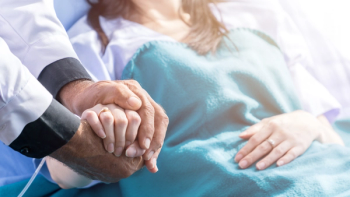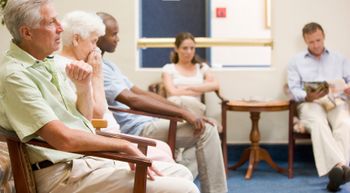
Tell Cancer to Take a Hike
If exercise were a medical treatment for cancer patients, I believe that doctors would prescribe it.
Recent research indicates that cancer patients with higher muscle mass have better survival outcomes. If exercise were a medical treatment for cancer patients, I believe that doctors would prescribe it. For many, better overall survival is an important benefit for survivors with active cancer or those currently stable or in remission. Basic exercise for patients isn’t a new discovery, either. The American Cancer Society published a recommended exercise article for cancer patients back in 2014. (March 24, 2014)
Researchers and doctors may make the recommendation, but they aren’t dealing with the fatigue, lymphedema, nausea, vomiting and diarrhea that frequently come as side effects of cancer treatments. Many survivors are willing to endure the side effects for a longer life, but they certainly don’t motivate cancer patients to work out.
My own doctors have mentioned exercise, but have not actively promoted it, so I manage this part of my treatment. My experience as a stage 4 cancer survivor, who will remain in treatment until the disease runs its course, is that exercise reduces the side effects of my treatment and my improved my overall health. While I don’t know whether it’s helped my cancer remain stable for the past 32 months, I feel much better when I keep moving.
Pills, chemo, radiation and other medical interventions are the first line of treatment our doctors prescribe. When treatment begins, cancer patients may not think to join the gym in great numbers because they feel tired and sick. Exercising to overcome drug and radiation side effects such as nausea, fatigue and diarrhea seems counterintuitive, but science shows reasons why it works.
- Exercise increases blood flow. Increased flow pushes the cancer treatment drugs through the body to where they can do their work more quickly, according to a study published in the journal, The International Journal of Hyperthermia. The drugs have enough time to do their job, but less time to impact the rest of the body. (One online friend exercises during her Abraxane infusions.)
- Exercise builds muscle. Muscle helps support bodies that have become weakened by surgery, radiation, medication and the side effects of these treatments. Many people use canes, walking poles or lean on their spouse or caretaker to help get back on their feet.
- Exercise helps with sleep. Some cancer meds cause fatigue. Try taking a walk instead of napping. In my case, it is then easier to sleep through the night.
- Exercise zaps stress. It’s hard to worry about scans, doctor visits and future potential health disasters while hiking, climbing, swimming, gardening or doing any other activity. Time spent paying attention to where arms and legs are going is time spent thinking about something besides cancer. Watch a deer crossing a trail in the woods. Rub the lavender leaves while walking past a shrub in the neighborhood and enjoy the fragrance on your hands. Watch the children playing on the playground and remember how it felt to be immortal. Focus on breathing and flexibility rather than aches and pains by taking a yoga class.
- Exercise can be a social activity. Exercise with a partner or buddy outside and forget about cancer for a little while. It’s a normal activity to do with a friend and a reminder of the many wonderful things that are easy to overlook while stewing about having cancer.
My experience with stage 4 disease has been decent so far. I’ve avoided surgery, chemo and radiation since I was stage 4 from the start. I was stunned with the news that cancer had spread through both breasts and most of my bones while I felt great and was happily oblivious. Once treatment began to control the cancer, every bone hurt, my skin aged 20 years and my anxiety went through the roof as the prescribed drugs took effect. Once I stopped worrying about dying, immediately things got better. Exercising improved everything. I still could hike, lift weights and swim. I took a new job and no one knew I was ill. I began looking forward to future events as I got stronger. Life looked more promising.
I’m fortunate. My cancer has remained stable through 32 months of treatment. Until progression comes, exercise is one thing I do to keep living fully. Others on the Breastcancer.org stage 4 metastatic breast cancer forum have also seen good results from continuing to exercise. One member inspired the group by taking a walk around the block, pulling her oxygen tank while recovering from surgery. Another walks on a treadmill during infusions to get in her steps, push chemo through her system and keep up her strength.
Last year I began hiking with Live By Living (LBL), an organization based in Colorado. LBL volunteers lead day hikes around the state and offer free retreats for survivors and caregivers in the mountains. A friend in that group recommended the YMCA program “Livestrong,” which has helped many regain strength after cancer surgery. The Y program is free with Silver Sneakers, which offers reduced introductory rates at the YMCA and may be part of other insurers’ wellness programs. Other programs are probably available wherever you live.
Exercise can take us into new friendships and activities we didn’t know we would enjoy. It starts with just a few steps. My motivation is family. A new granddaughter is joining our family this summer and I want to be here to help my daughter and love this new child. I want to see my other grandchildren play hockey and baseball and be at their piano recitals and maybe even graduations. I am willing to sweat a little if exercise will get me an extra year or two with those I love. These good times won’t last forever, but today I’m going to move. Today I’ll adopt Live by Living’s slogan and tell cancer to take a hike.





